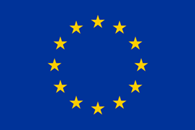How to predict the popularity of content on the Internet?
This question has been puzzling millions of people all over the world. And the answer is brought by scientists. For two years now, this issue has been researched by Tomasz Trzciński, Ph.D. Eng., of the Faculty of Electronics and Information Technology.
It all started from a cooperation with a US media concern as part of a project implemented together with the company Tooploox, within which Tomasz Trzciński manages his own research team. 'Films published by the concern on social media have an aggregate number of 9 billion views a month,' says the researcher from the University of Technology. 'The company always wants to know in advance whether given content will be as popular as assumed.'
Tomasz Trzciński has involved students from his Faculty to work on the project. The initiative has resulted in a few dissertations, scientific articles and Internet applications which allow users to upload a video and check its chances of becoming popular on the Internet. Eventually, one researcher came across a project of another researcher. 'I learned about RENOIR project, which consists in promoting information propagation on social media,' says Trzciński. 'His superior is prof. Janusz Hołyst of the Faculty of Physics.'
And thus an inter-department cooperation was established at Warsaw University of Technology. Specialists from the Faculty of Electronics and Information Technology joined forces with physicists and researchers from the Faculty of Mathematics and Information Sciences led by prof. Przemysław Biecek. The exchange of experiences resulted in the proposal to spend a month at Stanford University - one of the partners of RENOIR project. Tomasz Trzciński will spend the whole August there. 'I want to promote the effects of our actions and to look for ways to further develop our cooperation,' he says.
First impression is the key
What is it like to work on predicting what will be popular on the Internet? 'We process data concerning what content is viewed on the Internet, mostly on social media,' says Trzciński. 'For that purpose, we use deep neural networks. We adapt the structures of these networks in order to obtain answers to issues which interest us. This way, we want to predict how popular given material will be. So far, we are focusing mostly on visual and textual aspects. We take into account the start of a video or elements which we notice at first sight, such as the title and trailer. We know that if something draws the attention of the viewer for a moment, he or she will stay with the content for a longer time.'
It is yet another proof of how important the effect of first sight is.
In research works, our scientists use machine learning technologies. Algorithms learn from hundreds of thousands of already published films. However, their operation is not based on detecting specific objects in analysed material. 'Elements shown in a film are hidden in the whole learning algorithm,' points out Trzciński. 'We are able to identify some patterns of popularity or anti-popularity but they are mostly results of experiments carried out with the use of the algorithm, and interpretation of results depends on us.'
Faces — no; food — yes
What is it, then, that determines whether a given video will be popular on Facebook, and which content will be better off unpublished? 'Our algorithms indicate that it is difficult to sell a centred face against a uniform background,' explains Trzciński. 'It is mainly because it resembles a politician's face or a footage from a political speech — and that is what puts people off. What draws viewers' attention is, for example, food or films presenting how food is prepared. Warm colours work best: red, yellow, brown. Less popularity is generated by films featuring colours commonly considered cold, such as green or blue, and containing large amounts of text.'
The subject of the research is so up-to-date and down-to-earth that it draws a lot of attention. 'We are approached by media or marketing agencies, individuals creating press material on Facebook, brands themselves which want effective promotion,' explains Trzciński. 'I must point out, however, that we do not intend to eliminate or limit the role of humans in this respect. We are not saying that we know it all better than those making films or photographs. We know it differently. We give access to knowledge which such people have not had before. Now, they can use it in an effective manner.'
Agnieszka Kapela
Office for Promotion and Information
More information about the Project: www.renoirproject.eu
The project is financed from EU’s Horizon 2020 “Marie Skłodowska-Curie Actions” programme.
|
|
|











